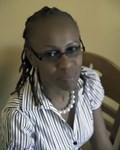Kenyan scribes get training on election coverage
Caleb Atemi, the programme manager of the Free and Fair Media Project shared more about the project.
How many journalists are in the program?
The program will run for close to three years. We plan to train print, radio and television journalists in mainstream media. Our workshops, which will be spread throughout the period, will be thematic focusing mainly on election reporting. We prefer a small group of nine to ten journalists.
What does the programme entail?
The program entails journalism training with a very practical approach. The format is four to six day workshop followed by field work. Each session has press conferences with real life characters, research sessions and field assignments. Each journalist must produce at least two stories within the month of training.
How will you measure the impact of the story?
The stories pass the test once they have been published. Each journalist will be mentored by a trainer. In all our training we endeavour to inculcate values of Conflict Sensitive Journalism (CSJ)
Can journalists really be objective?
Objectivity is a very difficult dream to achieve. We acknowledge that every journalist is by nature a subjective being. We therefore emphasise that they be guided by tenets of truth, accuracy, fairness and balance. Give voice to all sides. We also place emphasis on each story bearing the voice of ordinary citizens and Civil Society Organisations.
What characteristics should a political journalist have?
A political journalist should by nature be intelligent, widely read, a smart thinker, one who can think on his or her toes, a good researcher. He or she should be wired and networked to the political, social and economic sources. Develop a detailed and reliable source/data bank. Be capable of divorcing himself or herself from emotional and political lining
What difference in reporting do you expect after this training?
After the training we expect to have developed a mature, highly inquisitive and confident journalist; a calibre that will deliberately approach journalism with a fair focus lens.
How long is the training?
Our trainings last between four to six days. However, we have a mentorship program that is stretched to a month. Each reporter must produce a story or a feature under the mentorship of a trainer.
Will the training extend to other parts of Africa?
Internews exists in 70 countries. We therefore have similar programs running concurrently in other parts of the world.
What challenges face the average Kenyan journalist?
An average Kenyan journalist is a freelance who is not on any formal payroll and has little or no formal training. He or she struggles to research, write and even sell copy. Equipment and editing facilities are a distant dream. Access to information and reading material is a major challenge. All Internews graduates have access to our Media Resource Centre. They can use the cameras, tape recorders, editing suites etc to develop stories. Internews also offers travel/research grants to journalist to do stories in any part of the country.
























